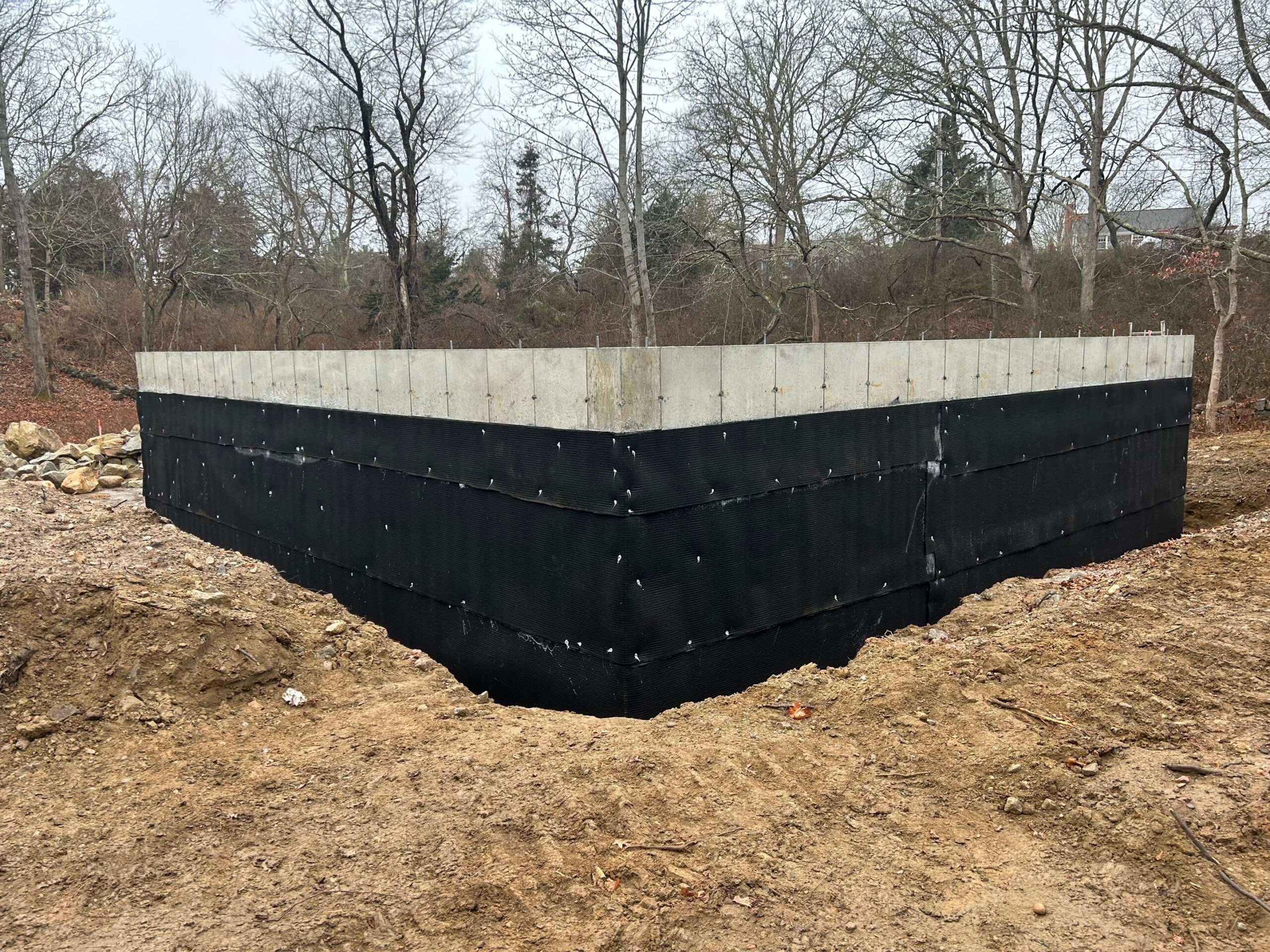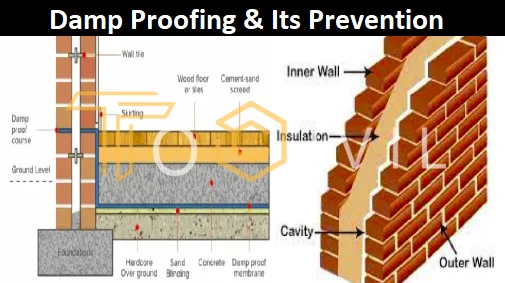Hidden signs you need damp proofing newcastle services now
Hidden signs you need damp proofing newcastle services now
Blog Article
Exploring the Various Methods and Solutions for Effective Damp Proofing
Wetness in structures positions significant obstacles to both structural honesty and interior air quality. Different methods and services have actually arised to combat this pervasive problem. From typical damp-proof membrane layers to cutting-edge chemical treatments, each method provides one-of-a-kind benefits. Recognizing these alternatives is essential for efficient dampness control. However, picking the appropriate solution relies on certain building conditions and demands, motivating additional expedition right into the most reliable moist proofing approaches readily available.
Understanding the Root Causes Of Moisture
Although dampness can occur from different sources, comprehending these reasons is crucial for effective removal. Generally, wetness stems from three main resources: increasing damp, permeating moist, and condensation. Increasing moist takes place when groundwater takes a trip up with porous materials, such as brick or rock, often due to an absence of an efficient obstacle (damp specialist newcastle). Penetrating damp is generally triggered by external aspects, including roof leaks, defective gutters, or damaged walls, allowing water to penetrate a property. Condensation, on the various other hand, arises from excess dampness airborne, frequently worsened by poor ventilation and temperature level differences, bring about water beads creating on surfaces. Determining these underlying issues is vital, as each kind of wetness calls for a customized method for remediation. Correct evaluation helps in identifying the most reliable options, ultimately protecting the structural integrity of a structure and boosting indoor air top quality
Standard Damp-Proof Membranes

Chemical Damp-Proofing Solutions
Chemical damp-proofing solutions provide an innovative approach to avoiding moisture invasion in buildings. These approaches normally entail the application of liquid chemicals that pass through stonework and create a barrier versus rising wet. Typically used chemicals include silanes, siloxanes, and other water-repellent representatives that respond with surface products to develop a hydrophobic layer.The application procedure usually requires boring holes right into the walls, injecting the chemical remedy, and permitting it to cure. This approach is particularly useful for older structures where traditional damp-proof membrane layers may be not practical. In addition, chemical damp-proofing can be much less turbulent and more cost-effective than comprehensive remodelling projects.While efficient, these options depend on appropriate application and ecological conditions for peak performance. Regular maintenance and monitoring are crucial to assure the longevity of the damp-proofing treatment. On the whole, chemical damp-proofing represents a functional alternative for protecting structures against moisture-related damage
Tooth Cavity Wall Building And Construction Techniques
Tooth cavity wall surface building and construction techniques provide countless advantages, especially in moisture control and energy effectiveness. By integrating an air gap between two layers of stonework, these walls effectively minimize water ingress while improving insulation. This mix not just protects structures from moisture yet also adds to reduced power usage.
Benefits of Tooth Cavity Wall Surfaces
When thinking about reliable damp proofing techniques, the advantages of dental caries walls attract attention plainly. Cavity walls include 2 separate layers, creating an air space that effectively lowers dampness penetration. This layout minimizes the threat of wetness, as the outer wall surface functions as a barrier versus rain and water access. Additionally, dental caries walls enhance thermal insulation, which adds to power effectiveness by lowering warmth loss. They also offer audio insulation, assisting to create a quieter indoor setting. Additionally, the air void enables ventilation, which aids in dampness control and lowers the chance of mold growth. These advantages not only improve the general comfort of a building but also contribute to its long life and structural honesty.
Moisture Control Approaches
Efficient wetness control strategies are critical in cavity wall building to guarantee long-lasting defense against wetness. One primary technique includes the consolidation of weep openings, which help with water drain from the cavity, stopping accumulation. Furthermore, using breathable membranes can assist manage wetness levels while permitting caught vapor to get away. Proper positioning of insulation is also critical, as it ought to not obstruct drain paths. Moreover, guaranteeing that the external fallen leaves of the cavity wall are built with water-resistant materials boosts total sturdiness. Regular upkeep checks are necessary to identify any blockages or damages early, safeguarding the framework's stability. Eventually, a combination of these techniques develops a durable defense against wetness intrusion in dental caries wall surfaces.
Insulation and Power Efficiency
Insulation plays a vital role in improving power effectiveness within dental caries wall building and construction. By including protecting products, these walls develop a thermal obstacle that reduces warm loss and minimizes energy usage. Effective insulation not just helps maintain a secure indoor temperature but additionally mitigates the risk of dampness, as it stops condensation within the wall surface tooth cavity. Various techniques, such as making use of inflexible foam boards or mineral woollen, can be used to achieve suitable insulation efficiency. Additionally, proper installation is important to guarantee that gaps and spaces are decreased, which can or else endanger energy effectiveness. Eventually, a well-insulated dental caries wall surface contributes considerably to total sustainability and reduces cooling and heating costs for house owners.
Exterior Damp Proofing Methods
Outside wet proofing techniques are crucial for protecting structures from dampness seepage. Two efficient methods consist of the application of water-proof membranes and the installation of French drains. These services assist mitigate water accumulation and protect the stability of buildings.
Waterproof Membrane Layer Application
While various approaches exist for avoiding moisture ingress, the application of water-proof membranes continues to be a very effective outside damp proofing strategy. These membrane layers are generally made from materials such as polyethylene, rubber, or changed bitumen, offering a robust obstacle against water infiltration. The installment process involves using the membrane layer to the outside surface areas of wall surfaces or structures, guaranteeing total coverage to stop leakages. Proper bond and securing at joints are crucial to taking full advantage of performance. Water resistant membranes can be applied in numerous types, consisting of liquid coverings and sheet membrane layers, enabling versatility based upon the particular demands of the framework. This approach not only protects structures from moisture however additionally improves their durability and architectural honesty.
French Drainpipe Installation
One reliable approach for managing groundwater and preventing dampness buildup around a building's structure is the setup of a French drainpipe. This drain system is composed of a trench full of crushed rock and a perforated pipe that redirects surface area water far from the structure. Correct setup needs cautious preparation, ensuring that the drain slopes far from the structure to assist in suitable water flow. In addition, the area of the drain is essential; it ought to be placed in areas susceptible to merging or excess wetness. Routine maintenance, consisting of clearing up debris from the crushed rock and making sure the pipe stays unblocked, is vital for long-lasting effectiveness. Inevitably, a well-installed French drainpipe can substantially minimize the threat of water-related problems in structures and cellars.
Interior Waterproofing Strategies
Inside waterproofing strategies are essential for safeguarding a structure's interior from wetness seepage and possible water damages. These techniques normally entail the application of specialized materials and methods created to create a dampness obstacle within the structure. One typical method is using waterproof finishes or sealers on wall surfaces and floorings, which stop moisture from penetrating surfaces.Additionally, installing interior water drainage systems, such as sump pumps, can efficiently manage water accumulation in cellars and crawl areas. An additional approach involves the usage of vapor obstacles, which are mounted to prevent dampness movement from the ground right into living spaces.Moreover, attending to any type of cracks or spaces in walls or structures with proper sealants guarantees a detailed protection versus water invasion. By executing these indoor waterproofing approaches, homeowner can significantly reduce the danger of mold growth, structural damage, and various other moisture-related problems. Appropriate implementation of these techniques is vital for lasting protection and building integrity.
Regular Upkeep and Assessment Practices
Normal maintenance and assessment practices are important for ensuring the long-lasting effectiveness of wet proofing services in any type of building. Regular checks make it possible for home proprietors to determine early indications of moisture intrusion, such as peeling paint, mold and mildew development, and mildewy smells. These signs can indicate underlying concerns that require prompt attention.Inspections should be carried out at the very least annually, concentrating on prone areas like cellars, crawl areas, and exterior wall read more surfaces. During these analyses, homeowner need to check out sealers, water drainage systems, and air flow to validate they function correctly.Additionally, keeping downspouts and rain gutters is crucial, as clogged up systems can result in water accumulation near the structure. Carrying out a regular maintenance timetable, together with prompt fixings, can considerably prolong the life expectancy of moist proofing measures and secure the structural integrity of the building. Aggressive measures eventually add to the total health and wellness of the living setting.
Frequently Asked Inquiries
Just How Lengthy Does Damp Proofing Commonly Last?
The duration of damp proofing efficiency differs, generally lasting in between 20 to half a century. Aspects such as application top quality, ecological conditions, and upkeep techniques greatly affect the longevity of the wet proofing treatment.

Can I Damp Evidence My Home Myself?
The individual contemplated the feasibility of do it yourself damp proofing. With proper research study and the right materials, it is feasible. However, they also acknowledged the relevance of specialist advice to guarantee resilient efficiency and stop future concerns.
What Are the Signs of Inadequate Damp Proofing?
Signs of inefficient damp proofing consist of relentless stuffy odors, visible mold and mildew development, peeling off paint, moist spots on walls, and timber decay - damp removal newcastle. House owners should deal with these problems without delay to stop further damages and wellness concerns
Does Damp Proofing Affect Indoor Air High Quality?

Just How Much Does Professional Damp Proofing Expense?
Expert moist proofing expenses differ significantly, generally varying from $1,000 to $5,000 depending upon the property's size, the extent of the damp concern, and chosen approaches. Each scenario needs a tailored assessment for accurate prices. Generally, dampness originates from three main sources: rising moist, passing through wet, and condensation. When considering effective wet proofing approaches, the benefits of tooth cavity wall surfaces stand out prominently. Exterior wet proofing approaches are important for securing structures from dampness seepage. While numerous approaches exist for preventing wetness ingress, the application of waterproof membranes continues to be an extremely effective exterior moist proofing strategy. Signs of ineffective wet proofing include persistent musty odors, visible mold and mildew growth, peeling off paint, moist patches on wall surfaces, and wood degeneration.
Report this page